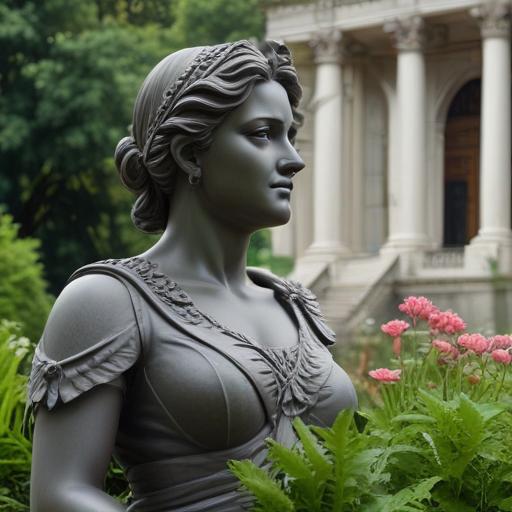On Tuesday morning, July 1, the Republican majority in the US Senate advanced a revised version of President Donald Trump’s ambitious legislative proposal, informally dubbed the “One Big Beautiful Bill.” This legislation, which aims to reduce funding for vital social safety net programs relied upon by millions, is expected to significantly add to the national debt. One notable allocation in the bill involves $40 million earmarked for Trump’s National Garden of American Heroes, a project designed to honor notable figures in American history.
The bill is now awaiting approval from the House of Representatives. If House Republicans succeed in garnering enough support, it will proceed to President Trump’s desk for final signing, aligning with the president’s timeline to have it approved by July 4, the day of national celebration.
Buried within the extensive 940-page document is the earmark for the garden, allowing funds from the National Endowment for the Humanities (NEH) to be utilized through 2028 for this initiative. Despite previous attempts by Trump to eliminate the NEH and National Endowment for the Arts (NEA), he appears determined to redirect resources toward this patriotic project. Earlier reports indicated that both agencies might need to contribute $17 million each from recent federal allocations.
Trump’s vision for the National Garden of American Heroes includes 250 statues commemorating a diverse array of figures, from historical icons such as George Washington and Martin Luther King Jr. to more modern celebrities like Kobe Bryant and Whitney Houston. The project aims to be completed by next year, coinciding with the upcoming 250th anniversary of the founding of the United States.
As of March, the governor of South Dakota has proposed the Black Hills as a potential site for the garden, citing its proximity to the iconic Mount Rushmore. While there has been speculation about adding Trump’s likeness to the existing sculptures at Mount Rushmore, officials have stated that there are no available sites for additional carvings.
The debate surrounding this bill—and the National Garden of American Heroes—raises questions about the allocation of federal resources and the balancing act between honoring historical figures and addressing current social needs. Regardless of the outcomes, the project reflects a blend of cultural ambition and political significance, aiming to foster a sense of national pride and heritage.
This initiative’s potential to spark conversations about patriotism and historical remembrance could encourage a greater reflection on America’s diverse narratives, invoking both support and criticism from various societal sectors.
